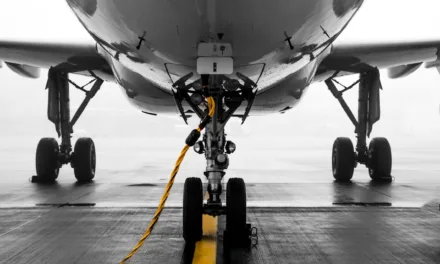Winter brings a unique set of challenges for fleet managers, with icy roads, unpredictable weather, and increased vehicle wear all contributing to potential downtime. Vehicle Off-Road (VOR) time can be particularly costly during this period, regarding operational efficiency and financial impact. By proactively addressing common winter challenges, fleet managers can minimise downtime and keep operations running smoothly.
Challenges of Fleet Management in Winter
As temperatures drop and winter weather sets in, fleet managers must address a range of obstacles that can disrupt daily operations. These challenges not only include increased risk of accidents and mechanical failures but also extended repair times and delays in the supply chain.
In addition, ensuring driver safety becomes even more complex, requiring additional preparation and resources. The following key challenges illustrate the fundamental areas of concern fleet managers might face during the winter months:
- Increased Risk of Accidents
Winter conditions such as snow, ice, and reduced visibility significantly increase the likelihood of road accidents, leading to potential repairs and downtime. - Mechanical Failures
Cold temperatures can lead to battery failures, thickened fluids, and increased wear on components like tyres and brakes. - Supply Chain Delays
Seasonal demand for parts and repairs often results in longer wait times for service, exacerbating VOR. - Driver Safety Concerns
Ensuring driver safety in hazardous conditions is critical, requiring additional training and vehicle readiness checks, which can strain resources.
Solutions to Minimise VOR Times during Winter
As fleet managers work to mitigate winter challenges; several solutions can help reduce Vehicle Off-Road (VOR) time and keep operations running smoothly. Proactive maintenance is key to ensuring that vehicles are prepared for harsh conditions. Partnering with approved repair networks and offering driver-specific winter training can also streamline processes and improve response times.
Advertisement
Additionally, implementing systems to closely monitor VOR times and using mobility solutions like rental vehicles can ensure that downtime is minimised, even when repairs are necessary. The following strategies highlight the most effective ways to tackle VOR during the winter months:
- Proactive Maintenance
Schedule pre-winter inspections and routine maintenance to ensure vehicles are prepared for colder conditions. Focus on areas like tyre treads, battery performance, fluid levels, and heating systems. - Approved Repair Networks
Partnering with an approved repair network can streamline the repair process. Pre-agreed labour rates and prioritized service agreements ensure faster turnaround times and cost control. - Driver Preparedness
Equip drivers with winter-specific training to navigate hazardous roads and avoid accidents. Providing emergency kits and ensuring access to assistance can also reduce disruptions. - Independent Estimate Verification
Engage independent engineers to verify repair estimates, ensuring accurate assessments and avoiding unnecessary costs. This step can also expedite approval processes. - Monitor and Minimize Downtime
Implement a system to closely monitor VOR times and hold repair providers accountable for timelines. Early intervention and clear communication with repair partners can significantly reduce delays. - Fleet Mobility Solutions
To keep your operations moving, consider mobility solutions such as rental or replacement vehicles during prolonged repairs. This ensures service continuity even during unexpected downtime.
Winter Fleet Management Best Practices
In addition to addressing the challenges and solutions mentioned earlier, adopting best practices can further optimise fleet management during winter. By investing in seasonal tyres and utilising real-time telematics, fleet managers can improve safety and vehicle health monitoring.
Planning for potential delays, including having contingency plans in place for spare vehicles or alternative routes, can ensure smoother operations. Finally, maintaining clear communication channels with all stakeholders—drivers, repair teams, and suppliers—can help resolve issues quickly and effectively. The following best practices provide important strategies to keep fleets running efficiently throughout the winter season:
- Invest in Seasonal Tyres: Ensure all vehicles are equipped with appropriate winter tyres for better grip and safety.
- Use Telematics: Real-time tracking systems help monitor vehicle health, enabling early detection of issues.
- Plan for Delays: Build contingency plans for potential disruptions, including spare vehicles or backup routes.
- Streamline Communications: Maintain clear communication channels with drivers, repair networks, and stakeholders to resolve issues swiftly.
As winter conditions continue to challenge fleet operations, the importance of preparation cannot be overstated. By proactively addressing common challenges—such as accidents, mechanical failures, and delays—fleet managers can ensure minimal downtime and operational continuity. The right mix of preventive maintenance, strategic partnerships, and best practices will not only reduce Vehicle Off-Road (VOR) time but also position your fleet for success year-round. Act today to safeguard your fleet and ensure smooth, efficient operations, no matter what the winter months bring.
Reach out today to experience our services for yourself.
For more information, contact Charlotte Simonek at: [email protected] or 07792 732566.
















